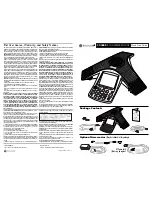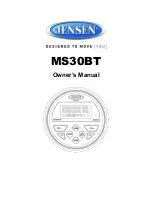
81
PBX Networking
PBX Networking
number dialled. The information
needed for routing a call can be con-
figured in a numbering table con-
taining up to 100 entries. You use
this table to assign telephone num-
bers and/or ranges of telephone
numbers to a particular route.
A
default
entry in the numbering ta-
ble makes it possible to seize a “de-
fault route” for all remaining unas-
signed numbers. In particular, this
simplifies configuration of the
OpenCom 100 as a subsidiary sys-
tem: the only entry you assign to the
default
entry is the route to the host
system
Example of closed numbering tables
The automatic switching of call re-
quests (i.e. routing) by means of
trunk group overflow or default
numbering can lead to “circular
switching”.
To avoid this, a “transit” counter is
incremented whenever a connection
is switched through on Q.SIG lines.
When the configured maximum
value is reached, further switching
stops.
Technical Details
A different PBX number must be set
for each OpenCom 100 in a PBX net-
work. This setting can be found in
the Web console, in the menu
PBX Configuration: System
under
the heading
System linking
. You can
also set the maximum value for the
transit counter there. This value de-
pends on the topology of the PBX
network and should allow the sys-
tem to have the maximum number
of further connections possible.
You can display the connection sta-
tus of the lines at any time in the
Configurator menu
System info:
PBX: Trunks
. You should check this
in particular after making changes
to a configuration to see whether all
the lines used for system networking
are operable.
Some of the features possible in
Q.SIG are not supported by
OpenCom 100 with all their options,
for example callback on busy within
the Q.SIG network. The call catego-
ries defined in Q.SIG (e.g. Emergency
Call, Operator, Normal) and the Q.SIG
name transmission feature (“user
names”) are fully supported.
The code digits to be used for seizing
a route with open numbering are
not transmitted to the destination
PBX and thus cannot be evaluated
by it. To reseize a route (for example
for a callback), you must set the ap-
propriate digit prefixes in the trunk
PBX
200-299
PBX
500-599
PBX
300-399
PBX
100-199
PBX
400-499
D: a
4: b
D: c
3: e
5: h
D: d
3: i
D: g
5: k
D: f
a
b
c
d
e
f
g
h
i
k
D:Default
Route
Содержание opencom 100
Страница 1: ...OpenCom100 OpenCom 105 107 110 120 Mounting and Commissioning User Guide ...
Страница 6: ...4 ...
Страница 134: ...132 Index Notes ...
















































